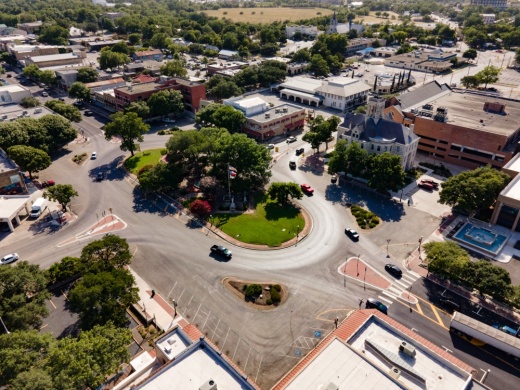The plan, known as the Confluence Economic Development Strategy, is expected to be implemented over five years beginning in January 2023, according to a press release from the Greater New Braunfels Chamber of Commerce.
The strategy will be enacted through a public-private partnership between the chamber, the GNBEDF, the New Braunfels Economic Development Corporation, the city of New Braunfels, Comal County and New Braunfels Utilities.
Matt Tarleton, an independent advisor and consultant, was hired to study a community assessment that was conducted earlier this year to assess the city’s economic competitiveness compared to other cities in the region.
The survey received 305 responses, Tarleton said during the May 17 meeting. Following the survey, Tarleton conducted interviews with community leaders, area boards and commissions, and held five meetings with a steering committee made up of representatives of the partner agencies included in the creation of the Confluence Economic Development Strategy.
Through his research, Tarleton said he determined a key issue facing New Braunfels is the rate at which residents leave the city for work and how many individuals working in the community cannot afford to live locally.
“And then we have a large number of people that have chosen to live here, but unfortunately need to leave each day to find the jobs in the occupations that they want,” he said. “And similarly, on the other side of the equation, those that work here who want to live in this wonderful place can’t afford to do it and can’t find the housing that will allow them to achieve the upward mobility in your community.”
One primary goal of the new plan is to attract high-paying employment opportunities and to evaluate the most efficient way to develop the remaining available land in the city.
“The city produced a study recently showing that if we continue to develop at the same rates of development, we will be out of developable land in 2035,” Tarleton said. “We have so much opportunity and choice at our doorstep, but we better do it now.”
The Confluence Economic Development Strategy outlines six strategic priorities aimed at increasing New Braunfels’ ability to maximize its economic development, he said. The priorities are to:
- Attract quality jobs in target industries;
- Create competitive office and industry space;
- Support the success of startups;
- Align and optimize workforce assets;
- Improve mobility and transportation options; and
- Execute proactive land use and development strategies.
Funding would be used to hire necessary staff and to cover expenses associated with the plan.
According to current operating agreements, the Chamber provides staff and operations for the city’s economic development partnership and is funded by the GNBEDF and the NBEDC.
Approximately 30% of funding used by the partnership comes from the privately funded GNBEDF, while 70% is from the publicly funded NBEDC, according to the presentation.
“The public sector was critically important in partnership with the chamber and the EDF in developing Confluence. They’re also going to be tremendously important in its execution,” Rose said. “But it will be private sector dollars that are responsible for raising the bulk of the delta between the $600,000 we spend annually today on our economic development mission and the $1.5 million that we will need to spend to execute Confluence.”
A fundraising committee is set to begin meeting in June to determine how to raise the needed funds, Rose said.
“Executing a plan of this magnitude is only possible through public-private partnership,” said Ian Taylor, CEO of NBU and 2022 chair of the Greater New Braunfels Chamber of Commerce. “It will take all of us working together in alignment to advance our shared economic development goals.”





